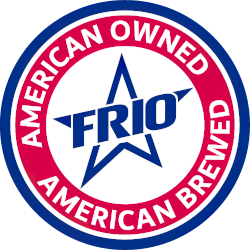The Remarkable History of Beer – Part 2
The Remarkable History of Beer – Part 2
Beer in the Americas
Beer in the Americas
The Native Americans as early as 800 years ago brewed their own kind of beer, not with hops or barley, but with corn. This was far before the Spanish arrived and began colonizing the Americas.
The whole world had beer before world-wide trade even started. That’s just how natural beer-making is to humanity! No matter where you go on the planet, and no matter what time period, you’ll always come across beer of some sort.
What’s great is that you can actually drink Native American corn beer to this day. There are a number of Native American run beer breweries that use their heritage to create unique corn beers that have been around long before Christopher Columbus and Samuel Adams.
With the arrival of the colonists came new beer preferences. Since the colonists were coming from northern Europe, they had a preference for cereal based ales, but once their beer from home ran out, they quickly learned what the Native Americans had to offer and started brewing their own corn beer.
Besides drinking corn beer, the colonists still had a longing for their old beers, so they experimented with what they had to try and create a more familiar beer taste. They tried spruce, ivy, persimmons, molasses, and even pumpkin as a replacement for the grains that they weren’t yet able to grow.
Just like the Mesopotamians and Egyptians that came before them, the settlers would bake their ingredients into bread first, then ground the bread up and mix it in with water to let it ferment. The process of beer making never really changes, as you can see, but the flavors definitely do.
Besides some spruce beers, none of these experimental flavors seemed to stick around for long.
Beer in United States History
Beer in United States History
If you’ve ever been to a college town, you’re probably just as surprised as I am.
Now let’s fast forward a few decades to when the Industrial Revolution was really kicking off. The Industrial Revolution started in Europe with the creation of the steam engine in the early 1800s, which led to the construction of thousands of new factories, mills, and urban settings.
The Industrial Revolution was the start of what we are so familiar with today -- mass production. Germany was one of the first countries to mass produce beer, and once they started, the rest of Europe and the United States followed suit.
It was around this time that real ‘American’ beers were starting to be created. Before this time, most beers, besides the Native American corn beers, were based on European ales and lagers. It wasn’t until the early 1800s that large American beer companies started popping up all over the country.
San Francisco, Chicago, St. Louis, Pottsville, Buffalo, and Milwaukee were all beer hotspots. By the year 1810, there were already 132 breweries in the country producing 185,000 barrels of beer a year collectively. While that’s nothing compared to today’s numbers, that’s quite a lot for a country whose population was only 7 million.
The American Temperance Society and Prohibition
The American Temperance Society and Prohibition
The End of Prohibition and Beer in Today’s World
The End of Prohibition and Beer in Today’s World
Related articles
How Can Light Beer Like FRIO Have Zero “0” Grams of Sugar?
Beer has a reputation for causing beer bellies and weight gain, and its reputation is not wrong.
READ NOW
Can You Drink Beer on a Low Carb Keto Diet?
The ketogenic ("keto") diet is a popular diet trend. Is beer compatible?
READ NOW
The Remarkable History of Beer – Part 1
Beer has been an incredibly popular drink since 7,000 B.C.E. Beer played a key role in Human History.
READ NOW
10 Fascinating Facts About Women's Role in Brewing Beer
Small description about the content. Adipiscing elit. Donec pellentesque tincidunt nunc ut vehicula.
READ NOW
What's the Difference 2-row & 6-row Barley?
2-row barley grows only two columns of barley kernels, while 6-row barley grows 6 columns of kernels.
READ NOW
The Important Role of Malt in Brewing Beer
Malting is one of the most important steps in beer making, but isn’t talked about nearly enough.
READ NOW






